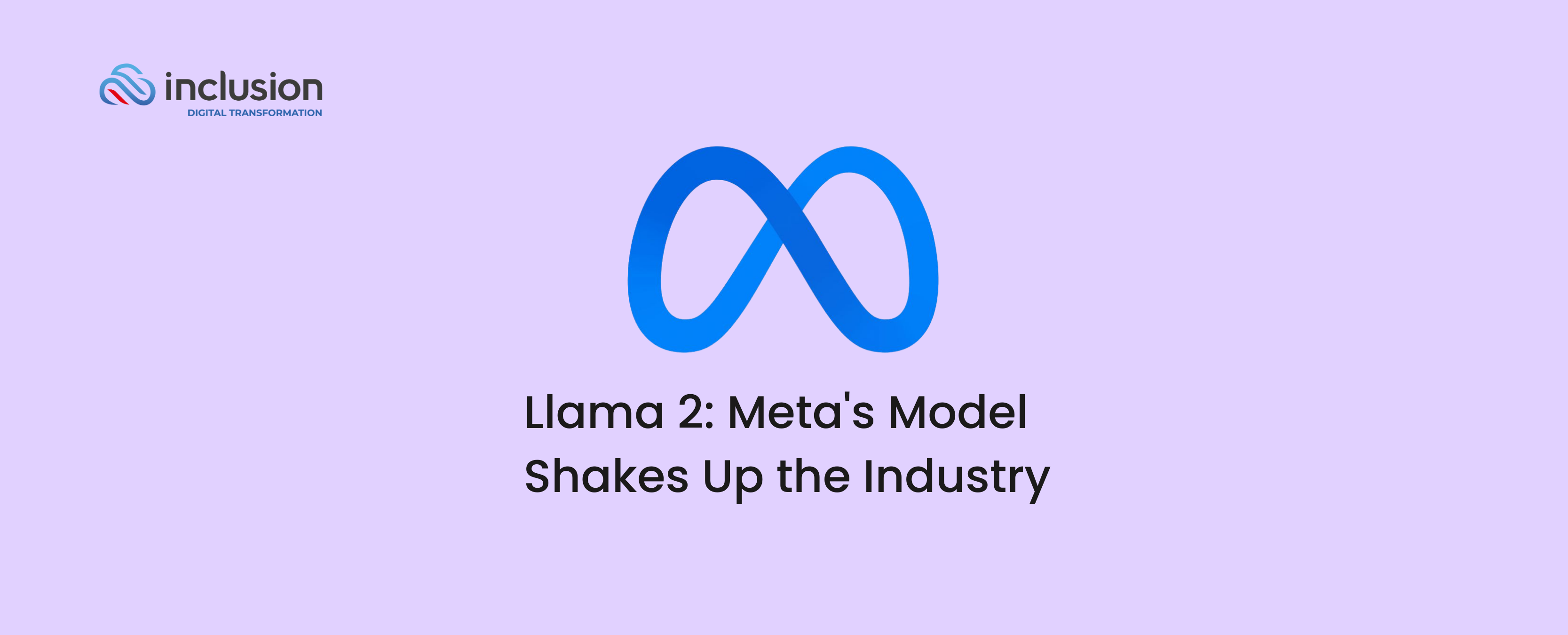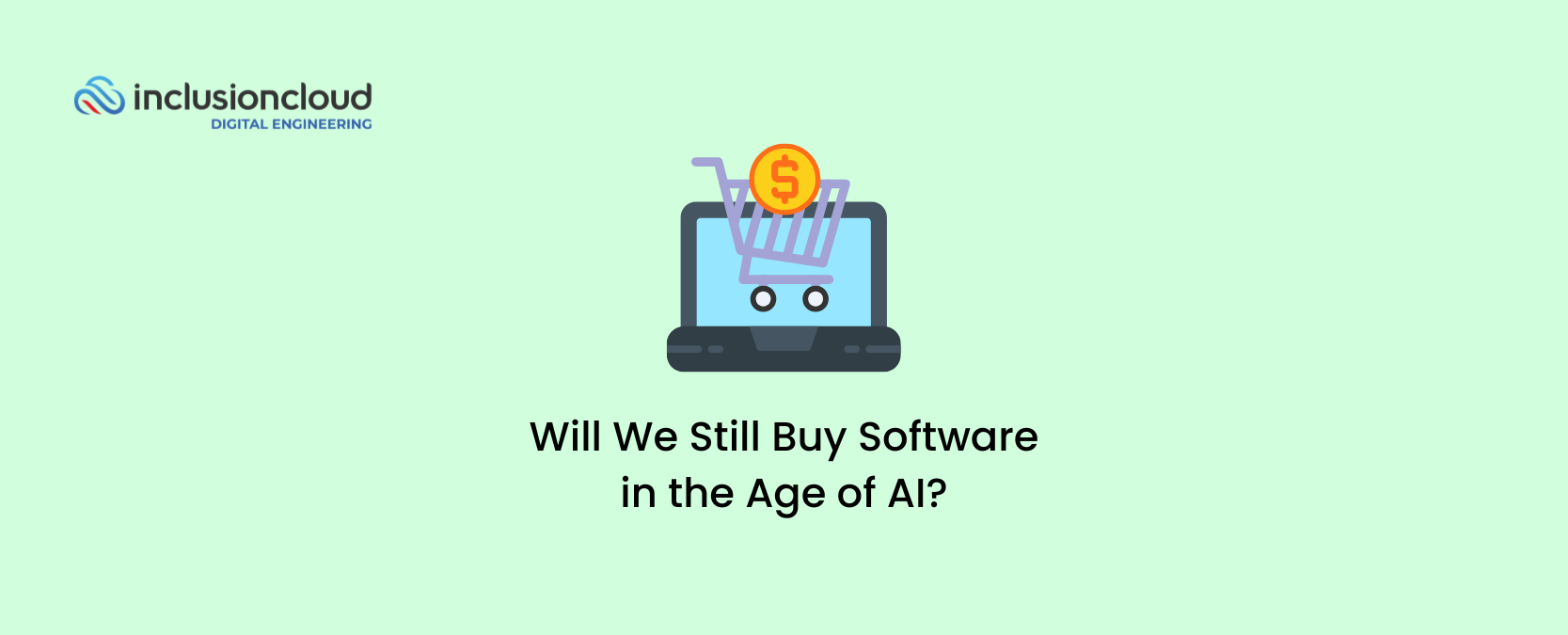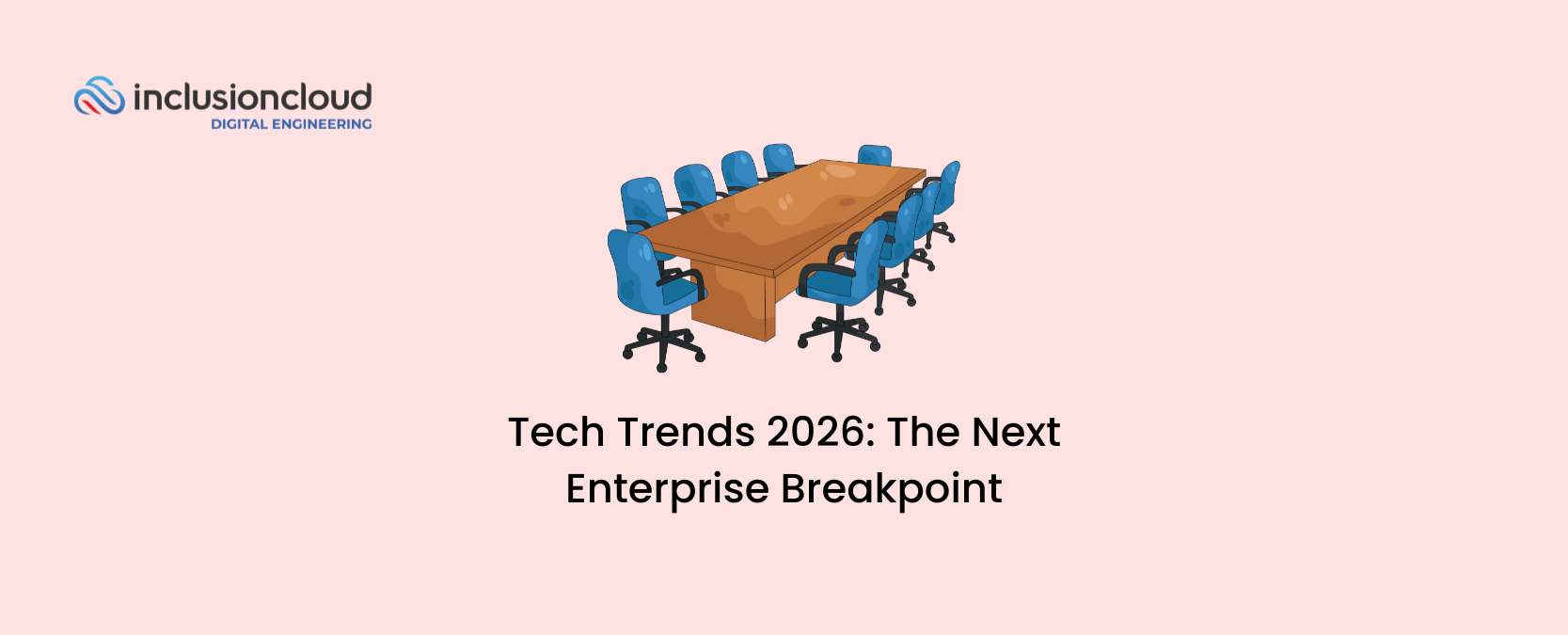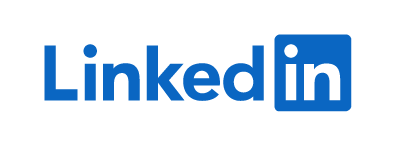Is OpenAI’s dominance under threat? The landscape could indeed shift with Meta’s new partnership with Microsoft. Today, Meta unveiled Llama 2, an open-source AI model that will integrate with Azure cloud services, promising to reshape the AI industry and challenge the established players.
Meta: The Disruptor
Meta’s strategic move to make Llama 2 readily available to the market marks a significant shift in the generative AI landscape. Unlike its predecessor, Llama 2 is open-source and free for both research and commercial use. This decision aims to foster innovation and provide developers with the opportunity to contribute to the model’s improvement. However, beyond gathering massive testing and feedback, its strategy is aimed straight at Open AI, one of its biggest competitors. Offering a robust open-source model that businesses can build upon in accordance with their needs could be a crucial move to challenge Open AI’s market dominance and its GPT model.
And it’s not just about strategy. Zuckerberg also promises that the model will be truly powerful and far superior to Llama 1.
Llama 2 takes center stage
Meta claims that the pre-trained models have been trained on a huge dataset 40% larger than the one used for Llama 1. The context length has also been extended to two trillion tokens, twice as many as in Llama 1. In addition, more than one million human annotations were performed to refine the quality of their results.
Not only has LLama been trained on more data, with more parameters, but the model also performs better than its predecessor, according to benchmarks provided by Meta.
One of Meta’s key objectives with Llama 2 is to enhance safety and transparency. The model has undergone rigorous testing and fine-tuning to minimize biases and improve responsible AI practices. By leveraging user feedback and incorporating supervised fine-tuning and reinforcement learning techniques, Meta aims to mitigate potential risks associated with generative AI models.
Microsoft: Betting Big
Microsoft’s involvement in the partnership with Meta may initially appear ambiguous. During 2023, Microsoft bet heavily on Open AI and integrated the GPT model in all its services, and invested billions of dollars in its partnership with the company. And using an open-source model, from a company like Meta, gives the impression that it could be a somewhat contradictory move and could affect the undisputed leadership of the GPT model.
However, by embracing Meta’s open-source model, Microsoft is aligning with competitors like Amazon and Google, expanding its AI model options for businesses. This move can be seen as a contingency plan for Microsoft, considering the ongoing legal challenges faced by OpenAI. By diversifying its AI model portfolio, Microsoft strengthens its position in the AI market and offers developers the choice to utilize powerful open-source systems, including Llama 2.
OpenAI: In Check?
OpenAI, the leading player in the LLM industry, now faces increased scrutiny following Meta’s groundbreaking announcement. With its enhanced performance and 40% more data compared to its predecessor, Llama 2 emerges as a formidable contender challenging OpenAI’s market dominance.
Although Llama 2 may not yet match the performance of OpenAI’s latest model, GPT-4, it offers developers and businesses a customizable and transparent alternative. This flexibility paves the way for faster product development and innovation, making Llama 2 an attractive choice for specific use cases.
The introduction of Meta’s Llama 2 intensifies the competition and underscores the imperative for continuous innovation and improvement in order to maintain a competitive edge in the ever-evolving AI market. To truly grasp the magnitude of Llama 2’s potential, close observation of its evolution is essential to ascertain whether it truly lives up to its apparent power.
The Future of AI: Transparency and Collaboration
The launch of Llama 2 and Meta’s partnership with Microsoft signal a shift towards greater accessibility and collaboration in the AI industry. By open-sourcing Llama 2, Meta aims to improve the safety and transparency of AI models. Developers and businesses now have a powerful open-source option, giving rise to new possibilities and advancements in the field.
Mark Zuckerberg stated that: “Open source drives innovation because it allows many more developers to build with new technologies”. He also put the focus on security and transparency: “It also improves safety and security because when software is open, more people can examine it to identify and fix potential problems. I think there would be more progress if the ecosystem was more open, and that’s why we are opening Llama 2.”
While the impact of Llama 2 on OpenAI’s dominance remains to be seen, it represents a bold step. Increased competition and the availability of diverse AI model options open the field to encourage a more collaborative culture, but also to provide a range of possibilities for companies to opt for the AI model that best suits their needs.
Two AI Models: Open-Source vs. Commercial
Zooming in on the different types of AI models, open-source and commercial, reveals distinct characteristics. Open-source AI models, such as Meta’s Llama 2, offer accessibility, customization, and transparency, enabling developers to modify the underlying code according to their specific needs. These models foster innovation and collaboration within a community of developers. On the other hand, commercial AI models, like those offered by companies such as OpenAI, provide quality assurance, support, and advanced features. They undergo rigorous testing and come with licensing agreements, ensuring reliability and legal compliance. However, they may have limitations on customization and may come with associated costs.
Understanding these differences is essential for developers and businesses when choosing the most suitable AI model for their specific requirements. Let’s look at the differences.
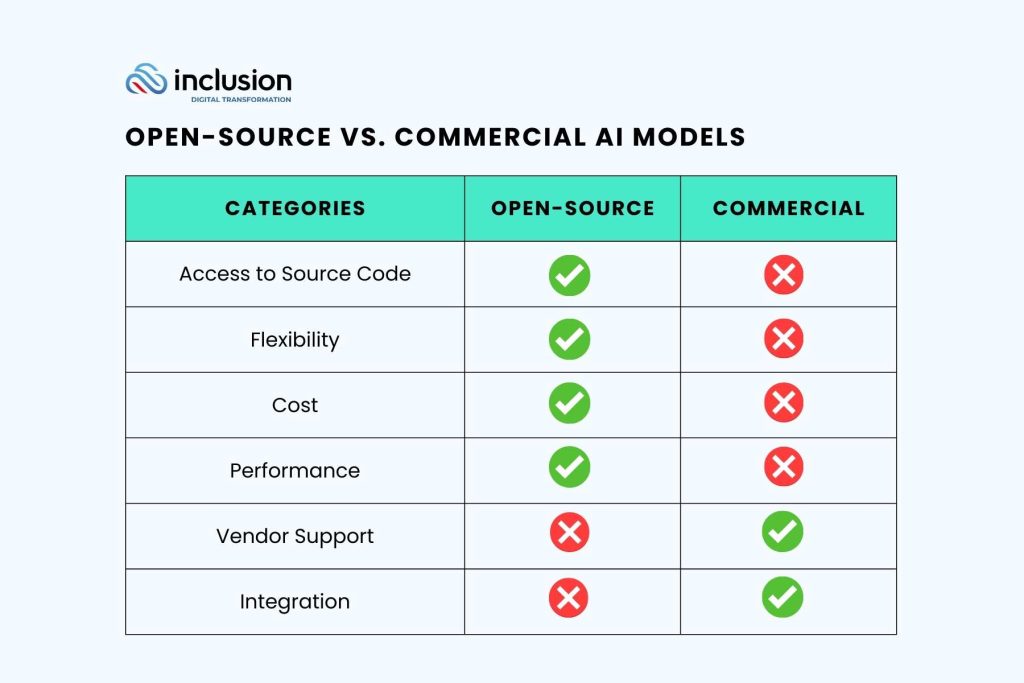
Open Source: Fueling Innovation and Democratizing AI
The introduction of Llama 2 as an open-source AI model marks a significant shift in the industry. Meta aims to foster an ecosystem that enables progress and democratizes access to AI capabilities:
Advantages of Open Source AI Models
Innovation acceleration:
Open-source AI models enable a broader community of developers to contribute, experiment, and improve the technology collectively. This collaborative approach can result in faster innovation cycles.
Customization and adaptability:
Open-source models provide developers with the freedom to modify and tailor the AI algorithms to suit their specific needs, allowing for greater flexibility and customization.
Reduced costs:
These models eliminate licensing fees and associated costs, making AI technology more accessible to organizations with limited budgets.
Transparency and auditability:
The open nature of the code allows for greater transparency, enabling experts and researchers to scrutinize the technology for bias, ethical considerations, or security vulnerabilities.
Commercial AI Models: The Established Dominance
Commercial AI large language models, such as GPT and Google Bard, have already gained a foothold in the market. These models have undergone extensive development, fine-tuning, and quality control measures to deliver reliable and high-performing results.
Advantages of Commercial AI Models
Extensive development and optimization:
Commercial AI models undergo rigorous development cycles, benefiting from significant investment, research, and iterative improvements to enhance performance and accuracy.
Vendor support and expertise:
Commercial models come with dedicated support from the vendor, including documentation, troubleshooting assistance, and updates, ensuring a smoother integration and operation within the organization.
Quality assurance and security:
This model is subjected to stringent quality assurance processes, addressing potential biases and vulnerabilities to provide robust and reliable LLM.
Intellectual property and competitive advantage:
Vendors of commercial AI models often hold intellectual property rights, allowing them to monetize their technology and maintain a competitive edge in the market.
Conclusion
The introduction of Llama 2 presents a formidable contender challenging OpenAI’s prevailing position. With an increase in pre-training data and over a million human annotations to refine its results, Llama 2 demonstrates its potential strength as an LLM model. By leveraging Meta’s open-source model, Microsoft aims to expand its position as a cloud platform powered by AI, offering businesses the choice of utilizing open-source systems.
For Meta, building an open-source AI technology ecosystem around its models could disrupt the revenue plans of its competitors. By providing equally powerful open-source systems for free, the value of their patented technology could diminish, as long as its model is as powerful as it appears to be. Additionally, Meta stands to benefit from advancements and error corrections, that may emerge if its model becomes the default choice for AI innovation.
Microsoft, on the other hand, has made a big gamble. It rides the trend of other cloud service providers such as Oracle and Google, and will start offering more language model options to expand its range of solutions. At the same time, they will increase competition (perhaps this could jeopardize the leadership of their Open AI?) but also find a plan b considering the legal setbacks faced by Sam Altman’s company.
In the face of this development, OpenAI finds itself in a complex position. The availability of Llama 2, combined with its performance enhancements, raises the possibility of a shift in the AI landscape. OpenAI must respond strategically to the evolving market dynamics and continue to innovate, refine, and differentiate its offerings to maintain its position in the industry.
Stay connected with us at Inclusion Cloud for further insights into technology news and IT market analysis. We will keep you informed about the latest developments in the dynamic world of AI and its impact on businesses and industries.

